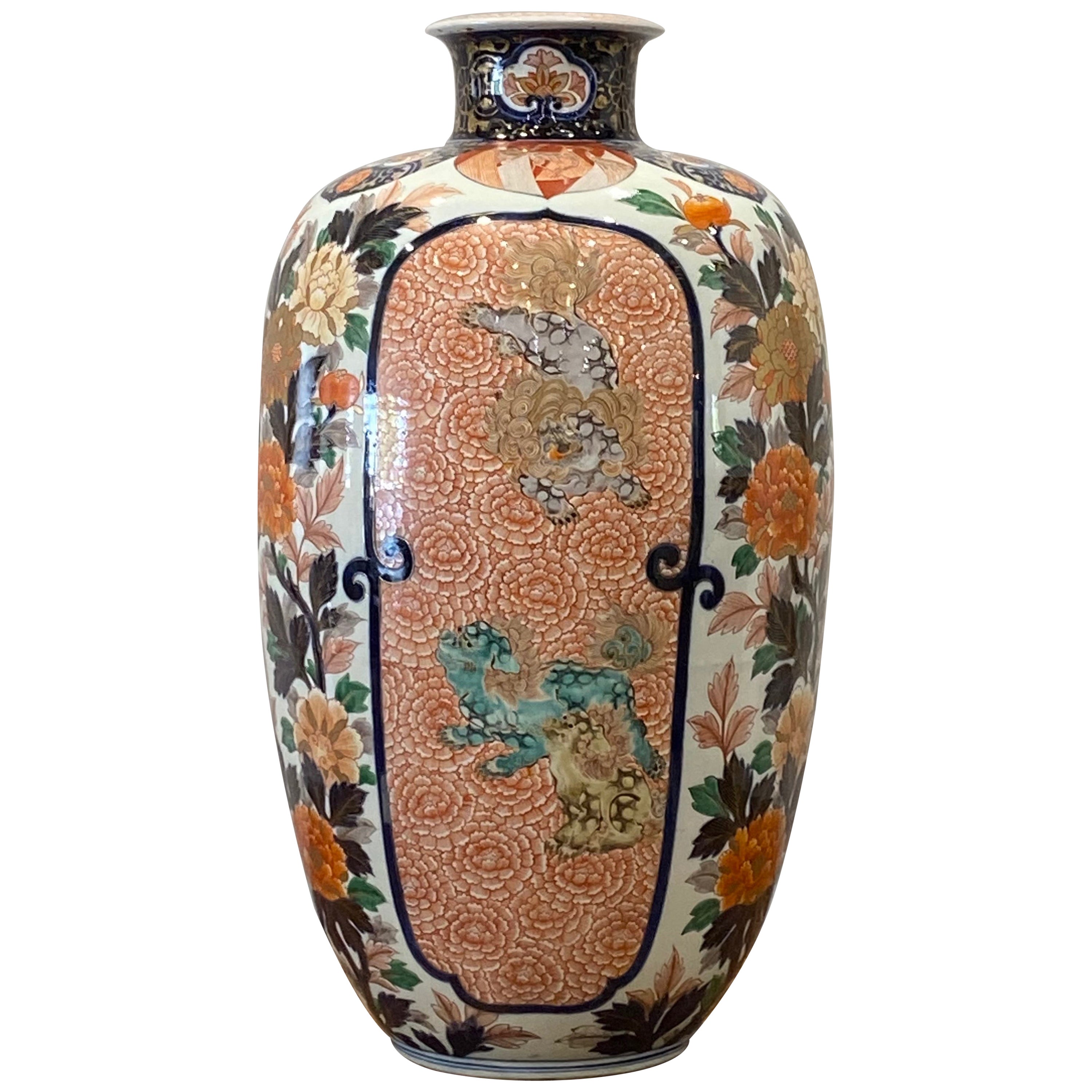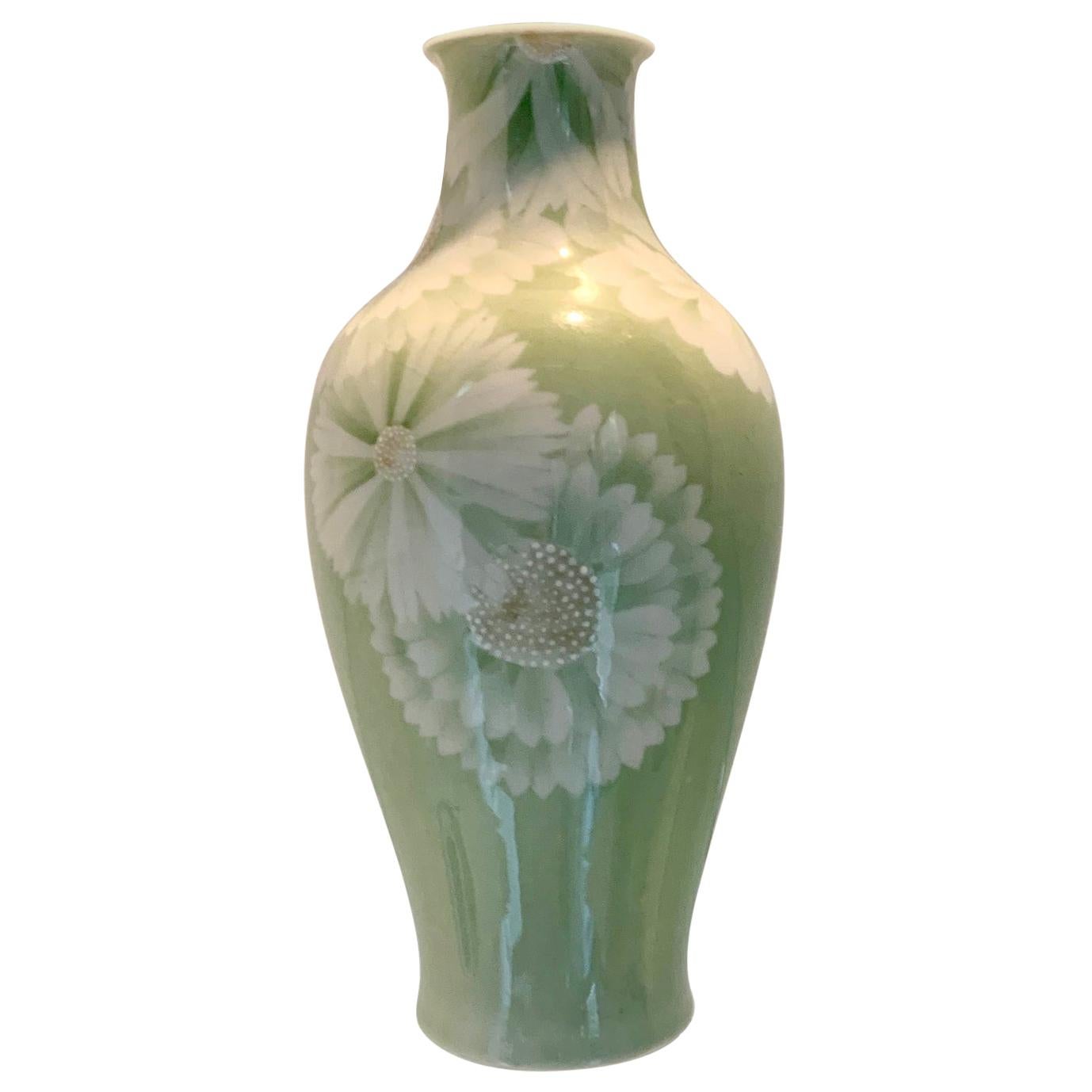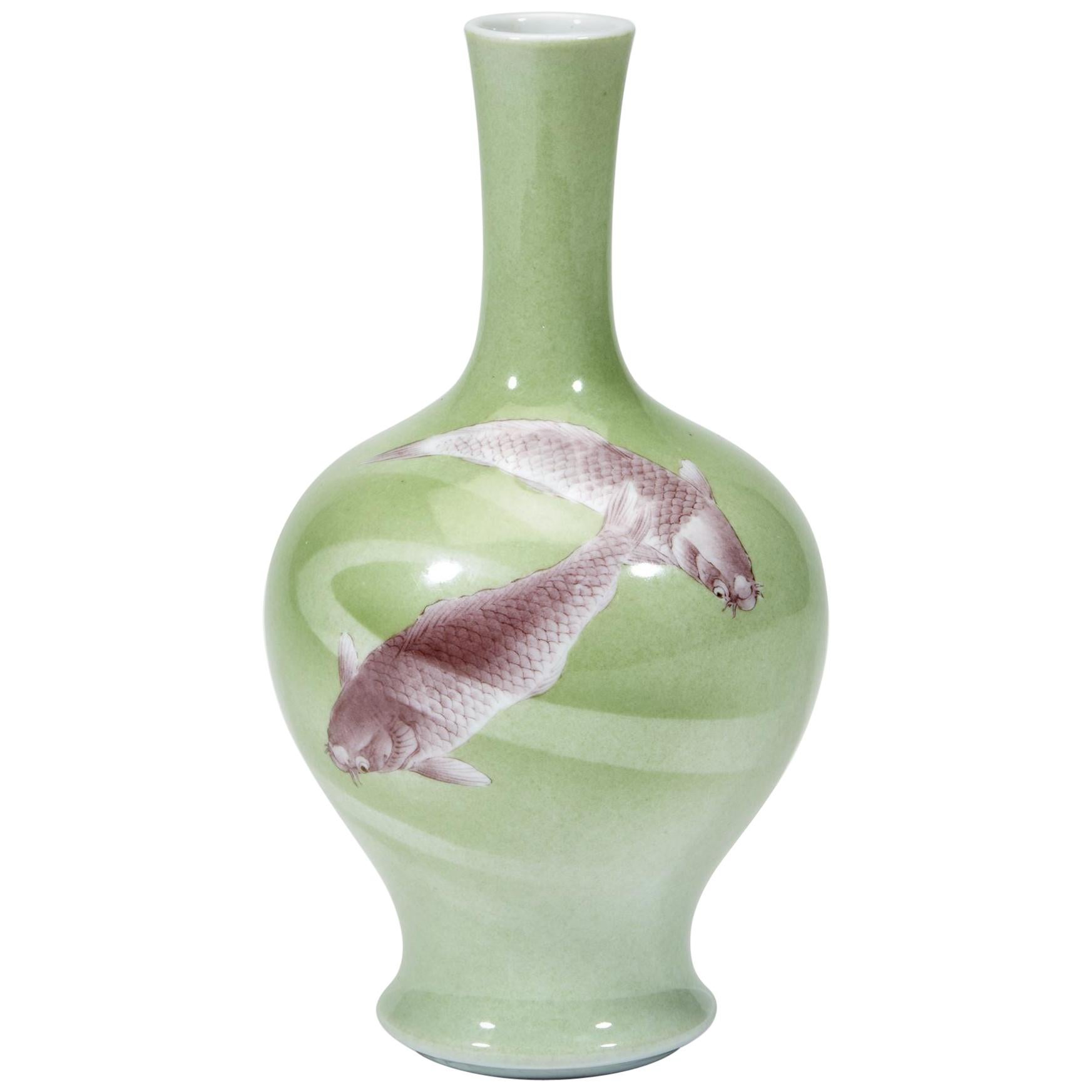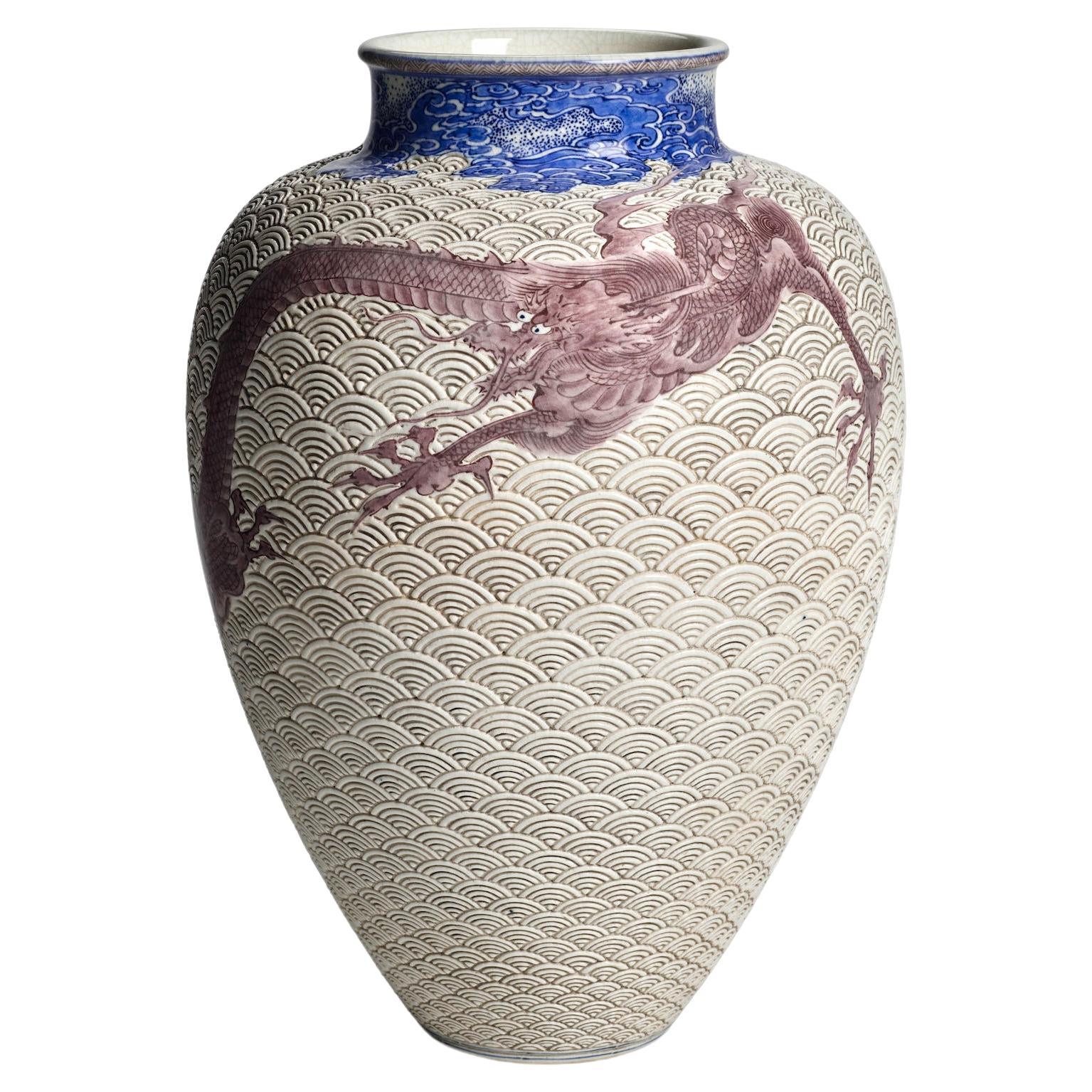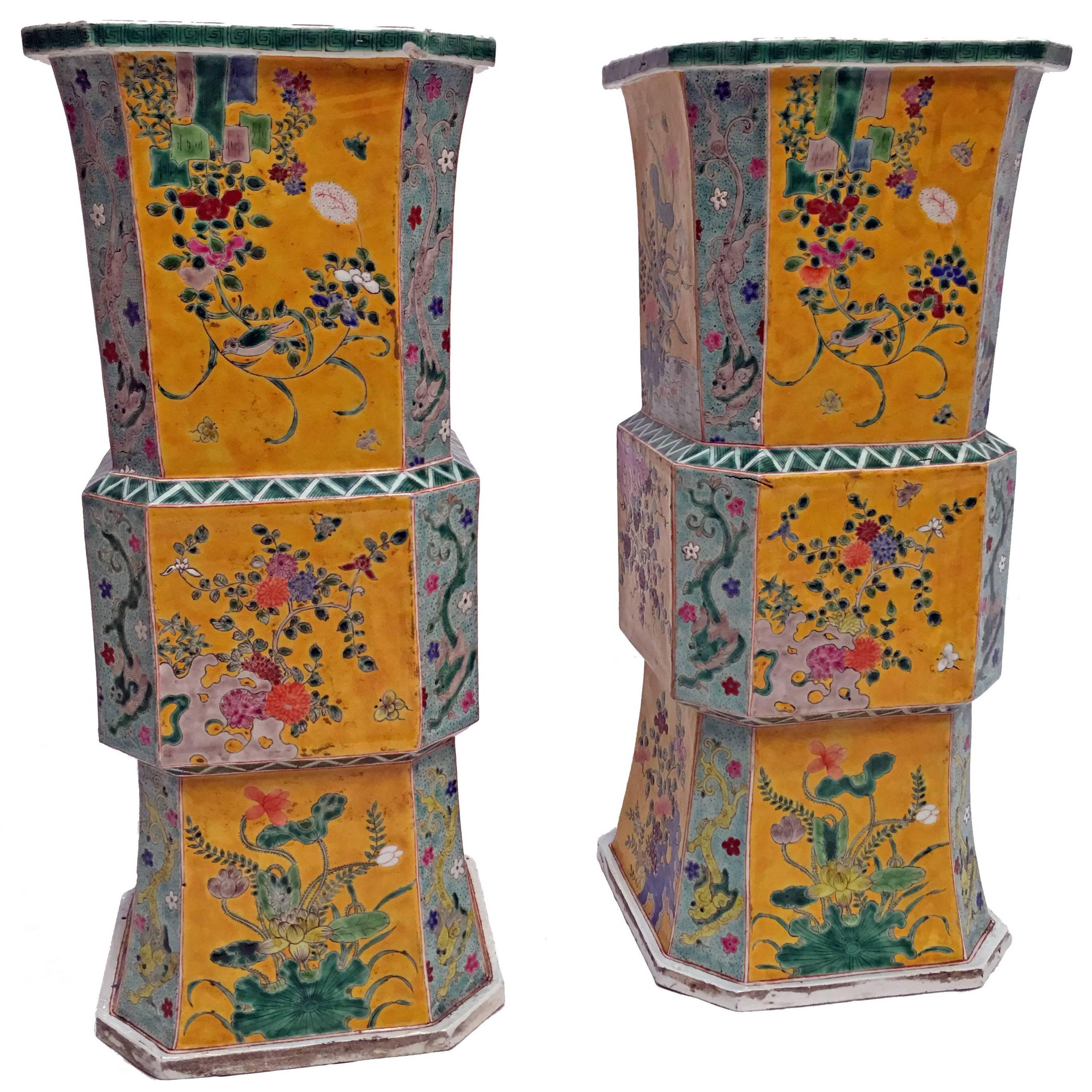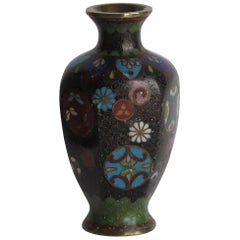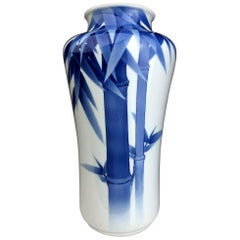
19th - 20th Century, Meiji Period, Japan, Vase
View Similar Items
1 of 6
19th - 20th Century, Meiji Period, Japan, Vase
About the Item
- Creator:Makuzu Kozan (Artist)
- Dimensions:Height: 8.27 in (21 cm)Diameter: 8.67 in (22 cm)
- Style:Other (In the Style Of)
- Materials and Techniques:
- Place of Origin:
- Period:
- Date of Manufacture:1869 - 1912
- Condition:
- Seller Location:London, GB
- Reference Number:Seller: 50151stDibs: LU186434487363
You May Also Like
- Large Japanese Meiji Period Imari Vase, 19th CenturyLocated in San Francisco, CAA large and impressive fine quality 19th century Imari vase, with hand painted classical floral motif and inset panels painting of playful Foo Dogs. Japan, Meiji period, late 19th c...Category
Antique Late 19th Century Japanese Meiji Ceramics
MaterialsPorcelain
- 19th Century Japanese Cloisonné Small Vase, Meiji PeriodLocated in Lincoln, LincolnshireThis is a very decorative small cloisonné vase, made in Japan and dating to the 19th Century, Meiji period. The vase has a good baluster shape w...Category
Antique 19th Century Japanese Meiji Ceramics
MaterialsCeramic
- Japanese Porcelain Vase Makuzu Kozan Meiji PeriodBy Makuzu KozanLocated in Atlanta, GAA striking blue and white vase from the studio of Japanese Potter Makuzu Kozan, also known as Miyagawa Kozan (1842–1916), one of the most established and collected ceramist from Meiji Period. Born as Miyagawa Toranosuke, Kozan established his pottery studio in Yokohama circa 1870s and later became one of the appointed artists to the Japanese Imperial household. His work was exhibited in many international fairs that the Meiji government participated at the turn of the century and won many grand prizes. Of a relatively large size, this vase is decorated with underglaze cobalt blue using the novel technique developed by Kozan called Fuki-e (the blow painting). As a result, the bamboos appear took on a three-dimensional quality as if appearing in a mist. Known as one of the most creative ceramists, circa 1887, Kozan started experimenting with new chemical colors from the West in the format of his porcelain glaze. New colors allowed him to create underglaze design that appeared bright, smooth and glossy. He even invented his own receipt of cobalt blue to achieve a much brighter yet softer shade, as evident on this vase. To create landscape that is realistic and dimensional, more common in the western paintings, he was inspired by the native Japanese ink painting technique developed around 1900 by Yokoyama Taikan...Category
Antique Early 1900s Japanese Japonisme Ceramics
MaterialsCeramic
- Japanese Porcelain Vase Meiji Period Makuzu KozanBy Makuzu KozanLocated in Atlanta, GAA finely decorated and glazed Japanese porcelain vase by Makuzu Kozan (1842-1916) circa 1900s Meiji Period. The vase is of a classic bottle form with baluster body and short neck. It was decorated with underglaze white magnolia blossom on a pleasant celadon background. The stamens of the flower were artistically rendered in a low relief, giving the design a realistic appeal with the dimension. Miyagawa Kozan...Category
Early 20th Century Japanese Meiji Ceramics
MaterialsPorcelain
- Fine Japanese Ceramic Vase Makuzu Kozan Meiji PeriodBy Makuzu KozanLocated in Atlanta, GAA Japanese long neck porcelain vase circa 1900-1910s by the studio of Miyagawa Kozan (1842–1916), one of the most established and collected Japanese ceramist from the end of Meiji Period. Commonly known as Makuzu Kozan, which also appears as the signature on his work, his originally birth name was Miyagawa Toranosuke. He was the appointed artist to the Japanese Imperial household and his work was exhibited in many international fairs that the Meiji government participated at the turn of the century. This vase features an elegant Classic form with a slender neck and slightly flared mouth above a baluster body. It was finely painted with two swimming carps in a copper red underglaze among green ribbons like waves. The background display a brilliant verdant green overall, Around the fish a poetic hazy effect was emphasized for a visual complexity by Fuki-e (the blow painting), an invention in Kozan's studio. The new technical development of chemical colors from the west was embraced circa 1900s in Kozan studio. This empowered the more creative experiments with not only colors, but also concept of dimension, which led Makuzu Kozan's work to become a bridge between East and West aesthetics. This is particularly evident in this vase with the Masterly details of the brush strokes, the expertly employment of gradient of color, and a very realistic and detailed rendering of the fish and their vivid motions. For two similar examples of Kozan's work with similar carps decoration, see Page 148-149 of the book: Sekai ni Aisa Reta ya Kimono Miyagawa Kozan Makuzu...Category
Early 20th Century Japanese Meiji Ceramics
MaterialsCeramic
- Japanese Cloisonné Vases Butterflies & Flowers, 19th Century Meiji Period, PairLocated in Lincoln, LincolnshireThese are a very decorative pair of cloisonné vases, made in Japan and dating to the 19th Meiji Period, circa 1875. The vases have a good baluster shape with a circular form. They...Category
Antique 19th Century Japanese Meiji Ceramics
MaterialsCeramic


